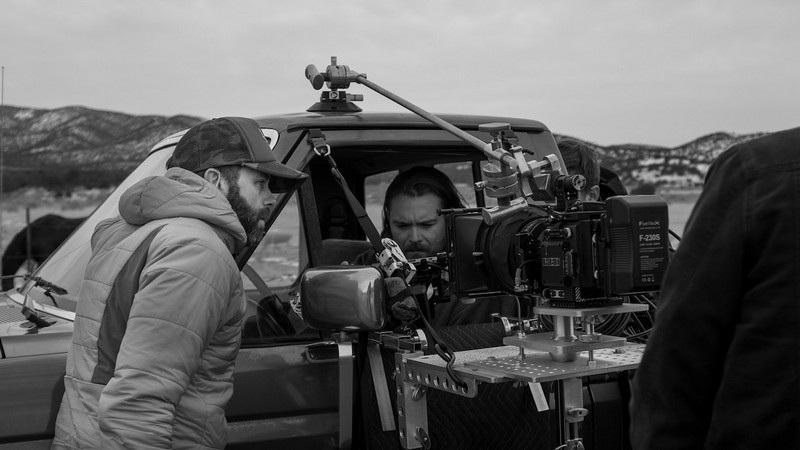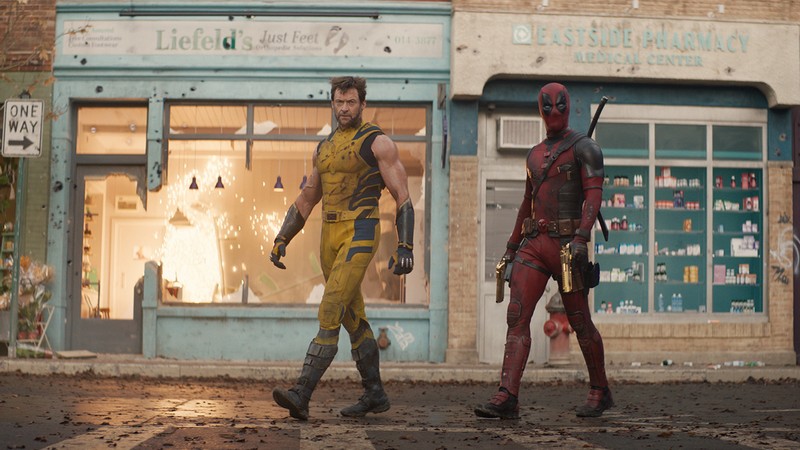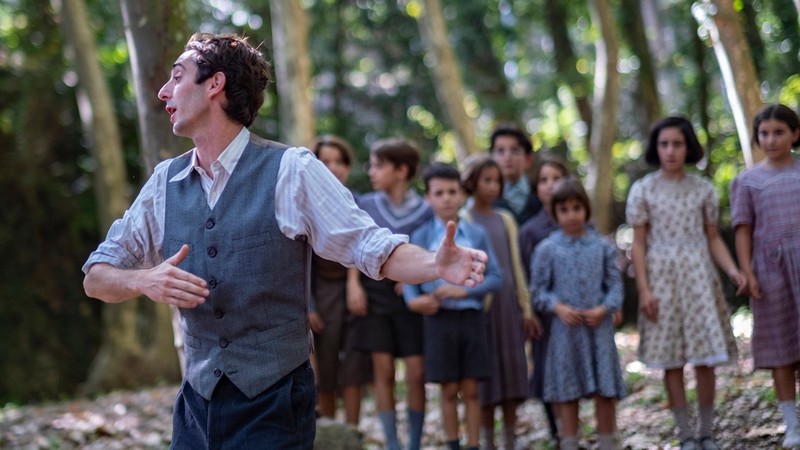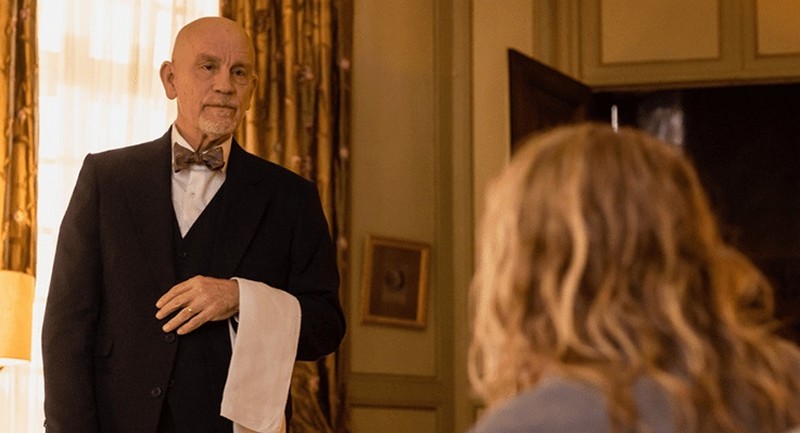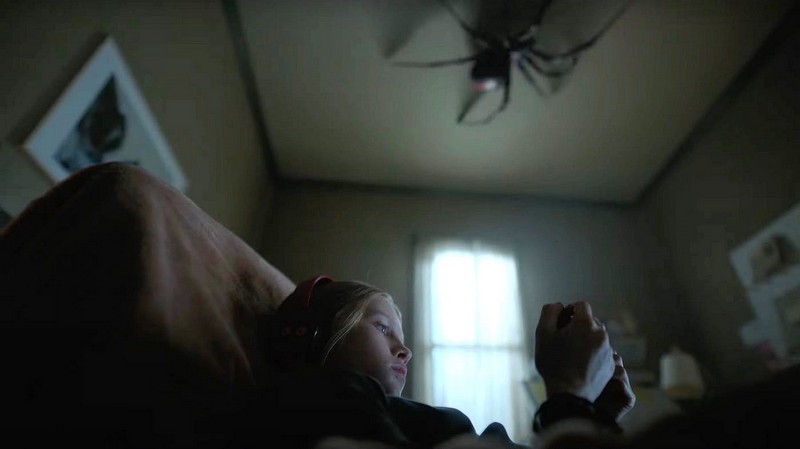Set in the icy mountains of Kenosha Utah, The Killing of Two Lovers is a gritty depiction of a married couple that have decided to spend time apart. Starring Clayne Crawford, Sepideh Moafi and Chris Coy, the film has received critical acclaim worldwide. Director Robert Machoian spoke about the film’s stylistic choices, working with his own family and the importance of independent cinema.
Patrick: How did the idea for the film come about?
Robert: It was kind of rooted in the fact that I had been married for 20 years, and many of my friends had been married for either that long or close to that long. And a lot of them were separating. And I began to have a very heightened paranoia, which makes sense when other couples you never thought would separate are separating.
So, I began to talk to my wife about it and try and be proactive to make sure that didn’t occur to us and she was very ‘I don’t know why you’re worried about it.’ And, that kind of conflict of me wanting to be very proactive, and her being very unthreatened that our relationship at all was in danger, not that I thought I was in danger, but it was, you know, it’s like, when catastrophe is happening, and you just make your way to the store to buy some more water bottles, you know, just in case.
That kind of approach of seeing where her and I were not really on the same page, what began to be the kernel of writing. Then dealing with, watching or observing a lot of my friends, my male friends specifically in the way that they were handling their divorces, or separations and how bad they went, and how awful their actions were, which was so outside of their character, they’re wonderful people. It was like their inability to be able to control a situation really resulted in a lot of erratic behaviour. I wanted to write about that behaviour, but maybe put it into a context, as opposed to the stories I was being told and how mind blowing they were to me.
Outside of context, they were wild, when you started to understand the context, they were still weird, but you were like, I’m watching somebody that’s about to lose everything, so weirdness, of course, is gonna happen.

Patrick: You mentioned in those separations, you tried to be proactive in resolving your friend’s relationships, but your wife was very casual about it. Is the movie a way for you to be proactive about divorces and separation? Are you trying to give a message about it through the film? If so, what would you like people to take out of the movie who might be going through a divorce?
Robert: Yeah, I mean, my younger sister one time, when we were all together for a family reunion. All the siblings were sitting around, and it at our parents. I remember my younger sister kind of criticizing my parents for not creating an environment where she understood that marriage is actually difficult, because my parents didn’t argue in front of us, they always went into their bedroom and would work stuff out. And when they came out, they would always be on the same page, there was very little periods of memory that they were ever in conflict.
It was like, we borrowed a VHS recorder, a video recorder and trying to figure out if it was on or not, you know, and that’s, like, that’s a point in our sibling’s discussions where we remember them arguing. My sister criticized the fact that as a result of my parents protecting us, when she was in her own marriage, and they started to argue early on, she thought the marriage was on the verge of divorce. You know, they’re arguing over you know, whether to buy crunchy or peanut butter and it’s like, I guess this isn’t the right marriage.
And so consciously, I wanted to make a film where you were forced to be in the gritty aspects of a marriage and at this specific time where they’re having to decide whether or not to continue. I wanted you to be forced in it so that if for you as a person, obviously in a very extreme manner, but then maybe if you were in the middle of a divorce, you might think, okay, so arguing is part of it. We may in the end work this out and even in the film’s construct, you’re not left with the with a gratifying answer. You’re left to really contemplate for yourself, you know, the decision is made by the characters.
Patrick: You said you wanted the audience to be forced into it to see how difficult marriage is. The title of the film is a big giveaway for that, but even the opening sequence. Did you always have that shocking opening sequence in mind to start the movie?
Robert: Yeah, I really wanted the audience to know the stakes, again, experiencing these friends of mine. Obviously, this is an extreme version because it’s a film, but some of the actions of friends of mine were so kind of appalling, but I was so empathetic towards them because I knew them. I really wanted to open the film understanding the stake and what’s at risk, but could we have empathy for somebody as they do some of the worst things in their life?
Patrick: Interestingly, a lot of your family members are in it. Your children play David’s children. Your dad plays David’s dad. Given it’s such a dark subject matter, how did you explain to your children what the subject matter when giving them direction?
Robert: To be honest, I explained very little in the beginning. Avery who plays Jess is not my daughter, and she’s older, she obviously understood the nuances. It was important for her to know them anyway because she’s the only one in the family who knows what’s going on. I wanted there to be an element of naiveness to the boys. So, there’s aspects, for example, like the rocket sequence in the film where their objectives are really just to have this really fun experience.
That being said, they were on set pretty much the whole time. All three of them are very excited about acting. So, they wanted to be able to watch many of the scenes, so they were aware of the conflicts going on between the parents. Regardless, they understood their objectives, which is to be these naïve kids in the process.
Patrick: There’s a lot of uninterrupted long takes where we get 5-10 minutes of conversation with the cameras just sitting there. How much, if any, rehearsal did you do in preparation for the film with the actors?
Robert: One of the benefits of the location we were at was that there wasn’t much to do outside. Kenosha is about 30 minutes to an hour from any significant city, so we weren’t really in a place to wrap production and then go do something else to kind of relax. As a result, the actors rehearsed a lot in the specific locations they were at, so Clayne [Crawford] would take the truck, for example, and drive over to the location and him and Sepideh Moafi would kind of walk through what was going on with their scene knowing that the plan was to do long takes. I mean, I shared the storyboards with them very early on so they understood that they would have this space to perform, and that we were going to go very long so it was critical that they were able to exist in this space.
Patrick: The setting of Kenosha, Utah is particularly distinct. Many shots have an endless horizon that makes you feel like the characters are trapped in this area with no way to escape. What made you choose this as the location for the film?
Robert: I was down there on another project and very quickly those beautiful majestic mountains in the background, and then the town itself, which is, you know, only three-square blocks. The houses are in different stages, you know, many of the people who keep their homes up and are beautiful, but other homes have been abandoned, or were built in the 1800s and were in the process of just crumbling.
Really early on, that contrast of beauty against this decay really began to feel like a metaphor for this marriage. We understand marriage as a very beautiful love story, like mountains are, you know, and then the reality of marriage, which is that it takes a lot of work, and then it’s rough. I started to think about each of these homes as kind of metaphors for different arguments that maybe David and Nikki had, and the proximity of the houses had to do with how close those were to their relationship. So, you know, across the street is a crumbling 1800s home, and I kept thinking, what argument early on in their marriage is that? And then right next to it is this very beautiful home, you know, nice home, and I was like, okay, what elements of their marriage are very, healthy?
If we think about the dating scene, for example, in the car, Nikki talked to David about ‘are you going to get the band back together?’ and how positively she looked at his early stages of being a musician, when they were in high school, and so forth. And you get this, oh, she really supported that venture for him. There was never a point in time that she said you need to stop being in a band and become a grown up, you know. And so, you get these tiny little nuggets of love between them, which the location just really communicated that to me.

Patrick: The sound design was also a very striking element of the film. The natural sounds around David represent its own musical score for his inner-turmoil. With all the doors slamming, and even when he’s driving his car, the cameras locked in on his face, and you can hear the cars swerving around. How did you come up with using those sounds as the score for the film?
Robert: I reached out to Peter [Albrechtson] very early on in the process, we had worked on a film prior. I reached out and was like, hey, I really, really need you to be a part of this film, and he was very positive. I started to send him Musique concrete, composers, and I just kept sending him stuff as production was going on. The result was the sound design that we have, he really kind of connected with the material that I was sending, and I knew that we wouldn’t have traditional forms of music and that the sound design was critical to allow us to understand the state of mind of David.
Patrick: All of your previous short films and documentaries have been directed with a partner. This is the first time doing a feature on your own. What was some of the big differences that you noticed working on your own?
Robert: Well, in working with Rodrigo Ojeda-Beck, and we still are working together, there’s a collaborative process that requires this kind of back-and-forth discussion and dialogue, which is a lot of fun, and can be very fruitful. But the result is compromise, you know. One it was scheduling; it was just one of those moments where scheduling didn’t really allow for the two of us to work together. We’re both teachers, he was in the middle of teaching and I was in the middle of teaching and the winter months were so critical to me to the to the narrative storytelling. It wasn’t a thing that I was like, well, we can wait till summer it was very much like okay, this thing needs to be shot now. So, what was learned is you lose that wonderful collaboration. But at the same time, you get to experiment or try some things that would have been lost via collaboration.
It was kind of this interesting process of like, I love the collaborative element of our relationship, but it was also very exciting to not have to work a scene out with somebody else, but to just play out it how I thought about it. Of course, I’m collaborating with the actors, but they’re not challenging me on the material, we’re working together on how to communicate that material.
Patrick: In this film, Clayne Crawford who plays David also produced the film. As a result, you weren’t beholden to any major studio, you were able to make the film you wanted to make. Do you find it more enjoyable to make a film that’s personal for you at the expense of having more money but working with a studio?
Robert: It’s a tricky balance. I mean, on one hand, there wasn’t a studio knocking down my door, to make this film. It wasn’t like, I was saying, ‘No studio! I’m making this smaller movie!’ But I do think there’s value in the independent structure, if you’re gonna make independent cinema, my own opinion is then you need to tell stories that are not told in the traditional form. For me, the most disheartening thing is to watch somebody make an independent film, but only because they hope one day to just make a studio film. It’s like, they’re using it in a way to be like, ‘See studios, I can make a movie’. Then the film itself has very little relevance, that I think is awful.
I think the purpose of independent cinema in it of itself is to start to change the narrative. Many films that if they’re successful independently, can make the studio a little bit more comfortable to tell a story a certain way. I think that’s critical. I think there’s an ebb and flow really, and I’m not, you know, studios in a situation where they’re putting millions of dollars, so I understand that they take a very kind of safe route in their investment. But my hope is to continue to tell these stories in a unique way, that hopefully, they become more mainstream, so that studios can be more comfortable in telling a unique story. You know, I think Wes Anderson’s somebody who’s a great example of that, you know, he has a very quirky style of telling movies, but as a result, he has been able to build a career where he’s able to tell larger stories with great actors, and achieve the budgets necessary to be able to have those actors.
Patrick: I understand you’ve almost finished your next film with Clayne Crawford, ‘The Integrity of Joseph Chambers’, would you be able to tell us a little bit about that, and also what you’re working on for the future?
Robert: The Integrity of Joseph Chambers is really looking at, you know, we follow a character who is very afraid of the world, which I think we can all relate to. He is attempting to prepare himself in the ways that he thinks you’re supposed to. In the case of this story, he’s trying to learn how to hunt, and we follow this individual as he is trying to become a hunter. That’s the nature of the film, a take on survivalism.
The idea came when I had this period, like I said, prepare and, maybe I need to get more water bottles, and to get more rice and so forth. And a guy that I met who was a prepper was very much like, ‘It’s too late. ‘You should have been preparing four years ago. Now is not the time. It’s over.’ I was very struck by that, and as a result wrote a screenplay, kind of exploring that idea. So yeah, we wrap the sound in the next three days, then after that, a little more colouring and then working out titles and credits and so forth. So, I’m very excited to be kind of in the final stages of that. And then I’ve got a couple scripts that are circulating that I’m hoping for an opportunity to work with a larger budget.
Patrick Scott
The Killing of Two Lovers screened at Digital MIFF in 2020. A wider Australian release is scheduled for 16 September 2021.
Other reviews you might enjoy:
- Mike Newell – the interview
- Interview with Dave McLean – director of Schemers
- My Name is Gulpilil: Interview with director Molly Reynolds

Patrick Scott is a recent graduate from Monash University with a Bachelor’s Degree in Media Communications. He is a freelance film reviewer based in Melbourne, and contributor to The Blurb.

